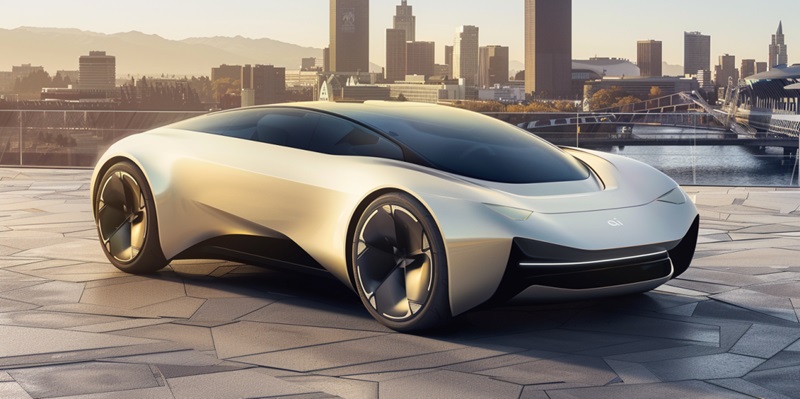In the ambitious quest to recreate human intelligence, artificial intelligence (AI) has encountered a fascinating obstacle known as Moravec’s Paradox. This paradox highlights a curious twist in the narrative of AI development: machines excel at what humans find challenging, such as complex calculations, but stumble on tasks that are instinctively simple for us, like recognizing a familiar face or grasping an object. This article ventures into the strides AI has made in transcending this paradox, especially through self-driving vehicles and the dynamic fields of augmented and virtual reality (AR/VR). As we stand at the precipice of these technological revolutions, we delve into the promise they hold as well as the challenges that come with navigating the intricate landscape of AI.
The Intricacies of Moravec’s Paradox
At first glance, the distribution of strengths between AI and humans seems counterintuitive. Tasks that are inherently simple for toddlers, such as distinguishing between a cat and a dog or navigating the labyrinthine aisles of a grocery store, are surprisingly complex for AI. On the other hand, the same AI effortlessly unravels the most intricate mathematical equations. Moravec’s Paradox captures this contrast, challenging us to decipher the inner workings of both human and artificial cognition.
This paradox serves as a beacon, guiding the direction in which AI research must proceed. Understanding that humans have fine-tuned sensorimotor capabilities over millennia of evolution, while rational thinking is a more recent trait, suggests a roadmap for AI evolution. Bridging this gap requires AI to mimic the neural pathways of instinct and intuition—an undertaking that could reshape the future of machine learning and robotics.
The Road Ahead with Autonomous Vehicles
The landscape of urban transport is witnessing a revolution through the emergence of self-driving vehicles—a testament to enduring efforts to counter Moravec’s Paradox. Cities like San Francisco are now living laboratories where autonomous vehicles navigate with increasingly human-like finesse. These cars are outfitted with a plethora of technologies, such as LiDAR and radar systems, enabling them to interpret vast amounts of data to recognize patterns, anticipate the behavior of pedestrians and drivers, and react with the appropriate maneuvers.
The likes of Waymo lead the charge in the self-driving car industry, demonstrating that through an amalgamation of sensors and sophisticated algorithms, AI can accrue navigational experience. The data accrued from myriad driving scenarios empowers these vehicles to refine their decision-making processes, showcasing advancements towards endowing AI with human-like intuition and adaptability in complex environments.
Bridging Realities with AR and VR
Beyond the tangible streets, AR and VR technologies represent another frontier in the quest to conquer Moravec’s Paradox. In the virtual expanses of AR and VR, AI can assimilate, experiment, and evolve in an accelerated fashion. These simulated realities provide a playground where AI can learn to navigate through the unpredictability of an urban drone delivery system or manage the delicate intricacies of a medical procedure.
The immersive simulation environments of AR and VR facilitate real-time learning and adaptation, akin to a human’s physical experience. As AI navigates through the digitally constructed worlds, it hones the very skills Moravec’s Paradox deems challenging. AR and VR are not merely transforming the entertainment industry; they are proving to be instrumental in the very progression of AI’s cognitive and sensorimotor faculties.
Cognitive Growth for AI: From Machine to Childlike Learning
Transcending current AI capabilities might entail a pivot toward the inquisitive and imaginative approach found in children. As noted by cognitive psychologist Alison Gopnik, the attributes of childlike learning—creativity, experimentation, and the ability to entertain hypotheticals—could unlock previously unattainable advancements in AI.
Emulating the way children explore their world and adapt their understanding could endow AI with similar growth trajectories. Leveraging these aspects of learning in AI development can lead to breakthroughs in machine creativity and problem-solving, potentially enabling AI to master the ambiguity and subtleties predominant in human behavior and interaction.
Preparing for AI Governance and Risk Management
Moravec’s Paradox presents a conundrum in AI development: easy tasks for humans are often the hardest for machines. This irony is evident as AI surpasses humans in complex calculations yet struggles with basic perceptual tasks. However, progress is evident, particularly in autonomous vehicles and AR/VR technologies, where machines are beginning to navigate and interact with the real world in a more human-like manner.
Self-driving cars are a prime example, as they combine advanced computation with the intricate sensing required to maneuver safely. They must interpret vast amounts of data from sensors, understand nuanced road signs, and make split-second decisions, emulating human drivers’ reflexes and awareness.
Similarly, AR/VR advancements are pushing AI into realms that require an understanding of space, movement, and human interaction. As AI continues to improve, these fields promise significant enhancements to how we live and work. Yet, the journey ahead is challenging, with issues such as ensuring safety and addressing ethical concerns. In overcoming Moravec’s Paradox, AI not only has to compute but also perceive and understand the world with a near-human touch.

